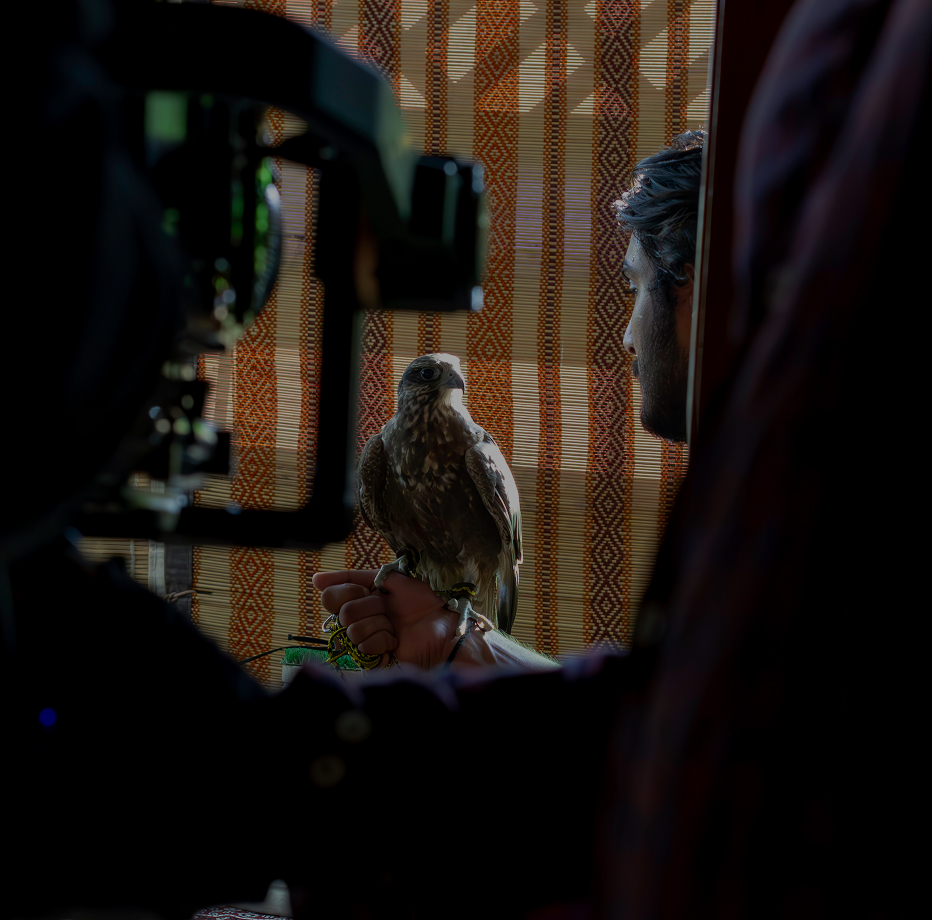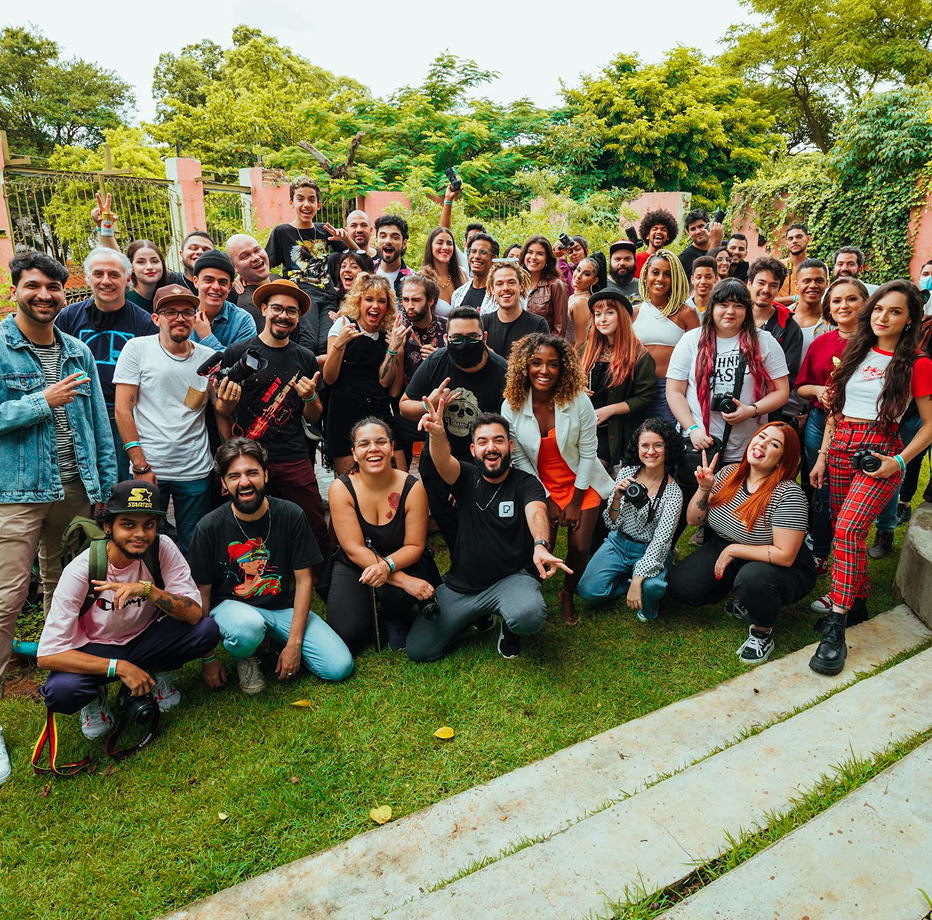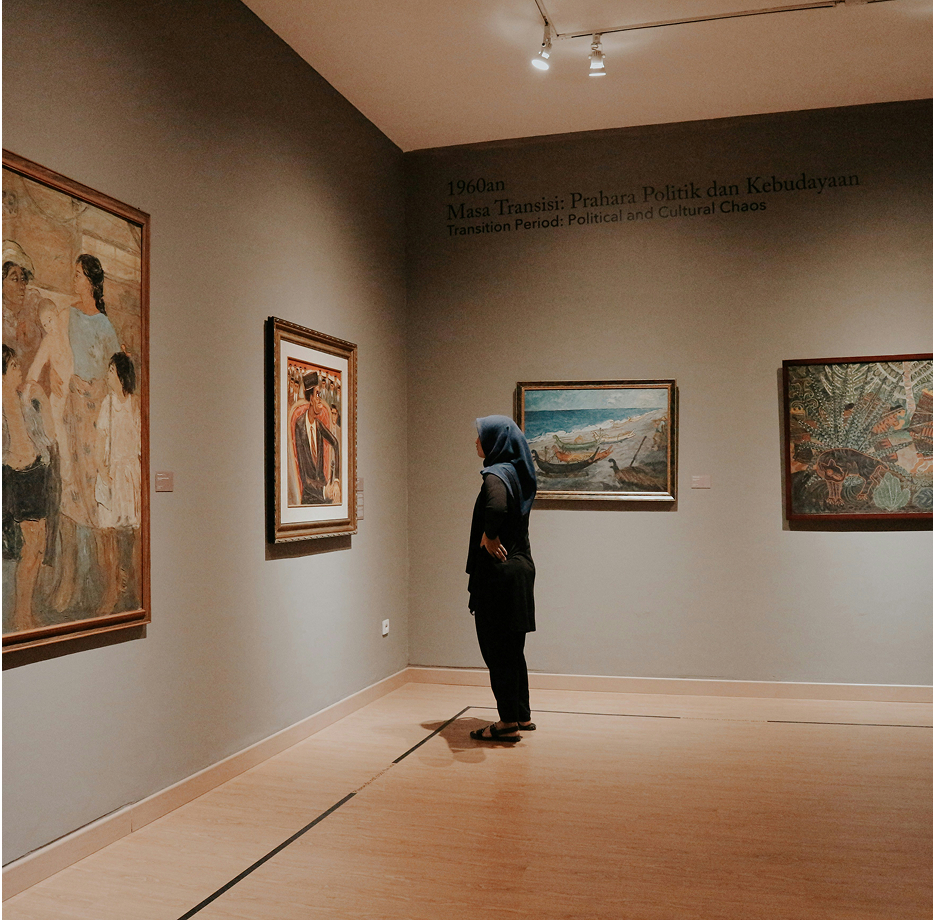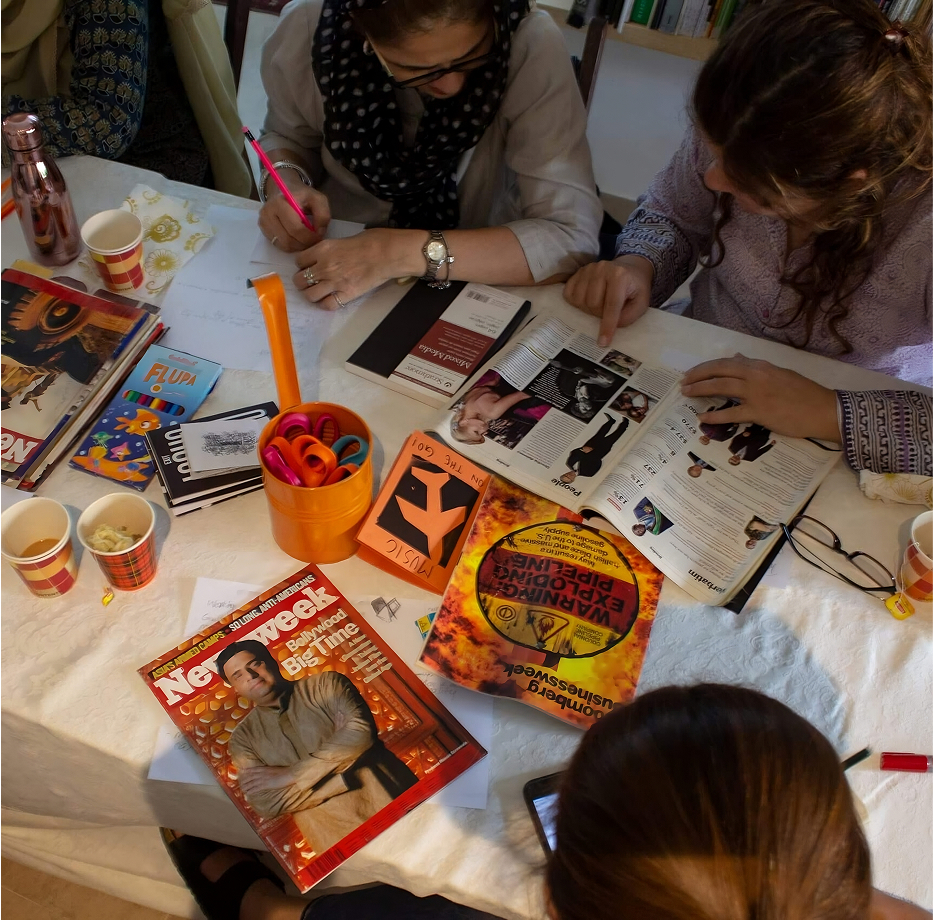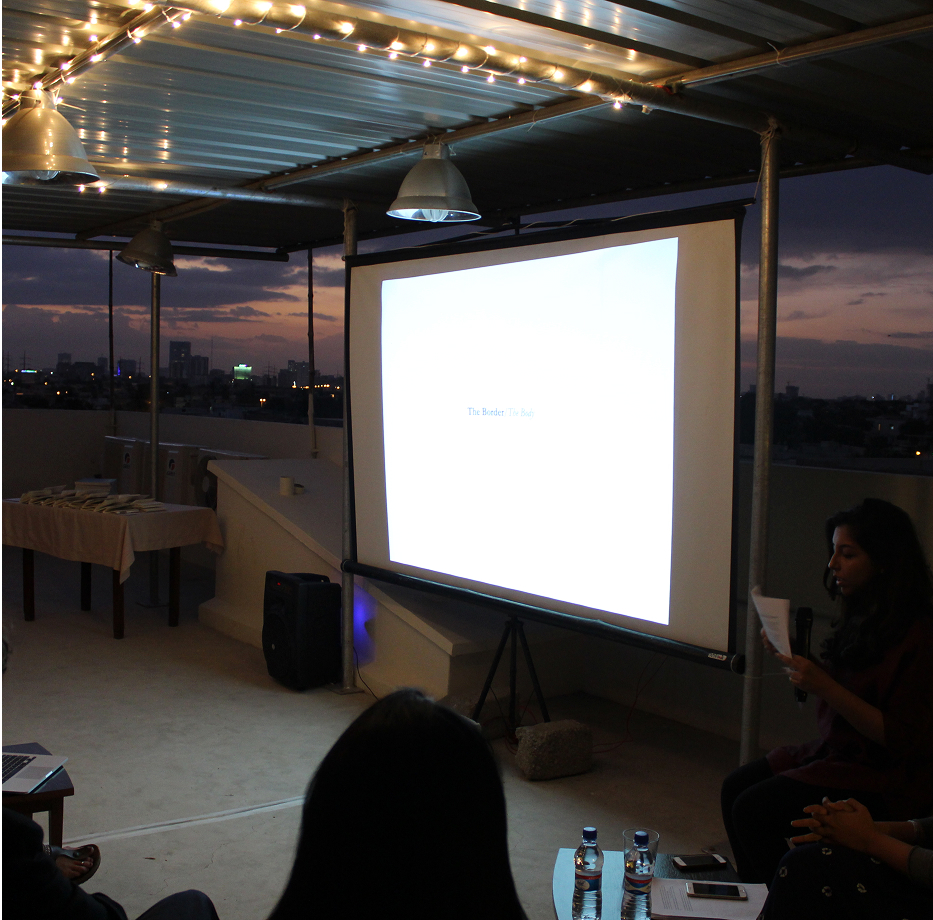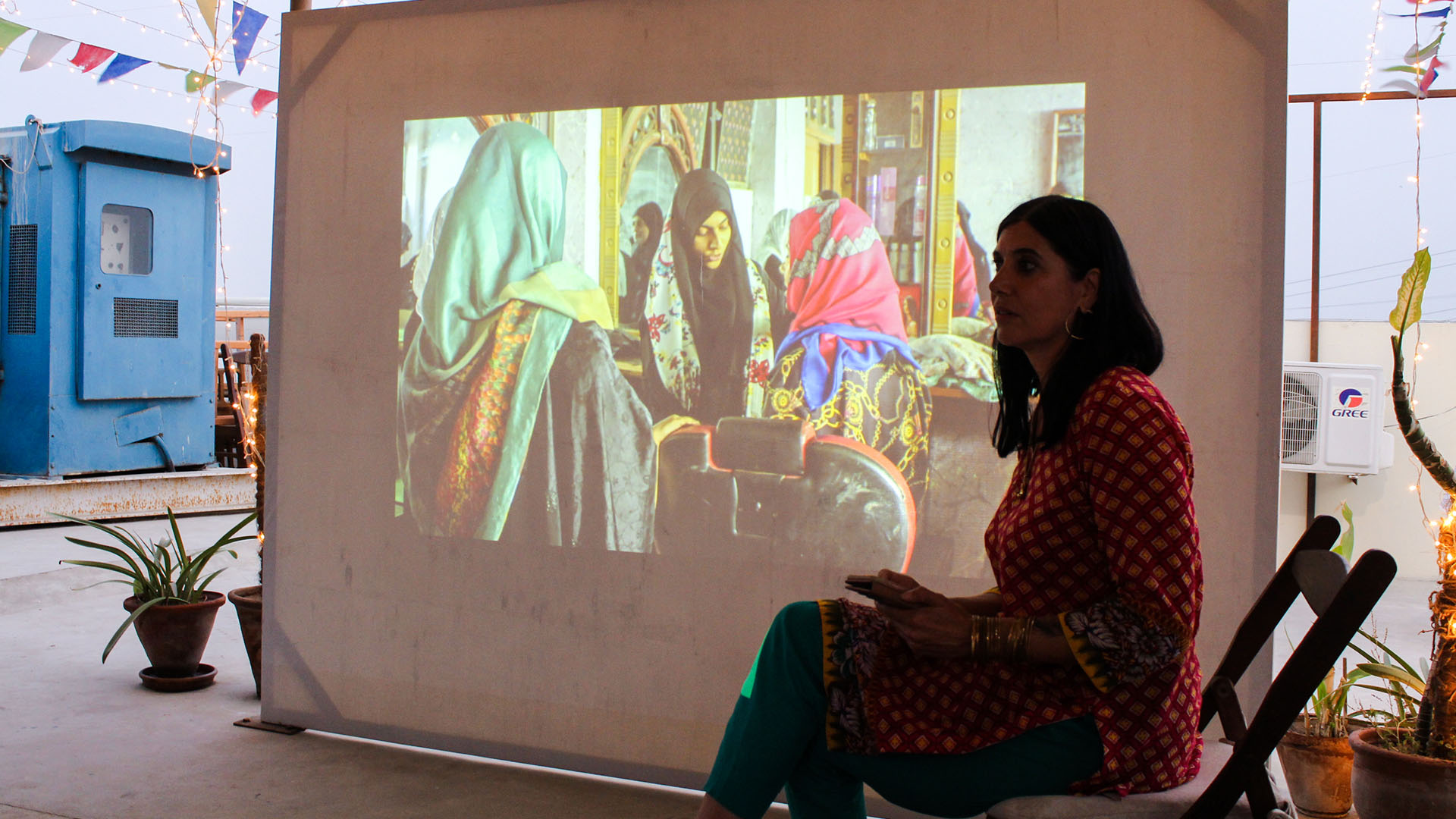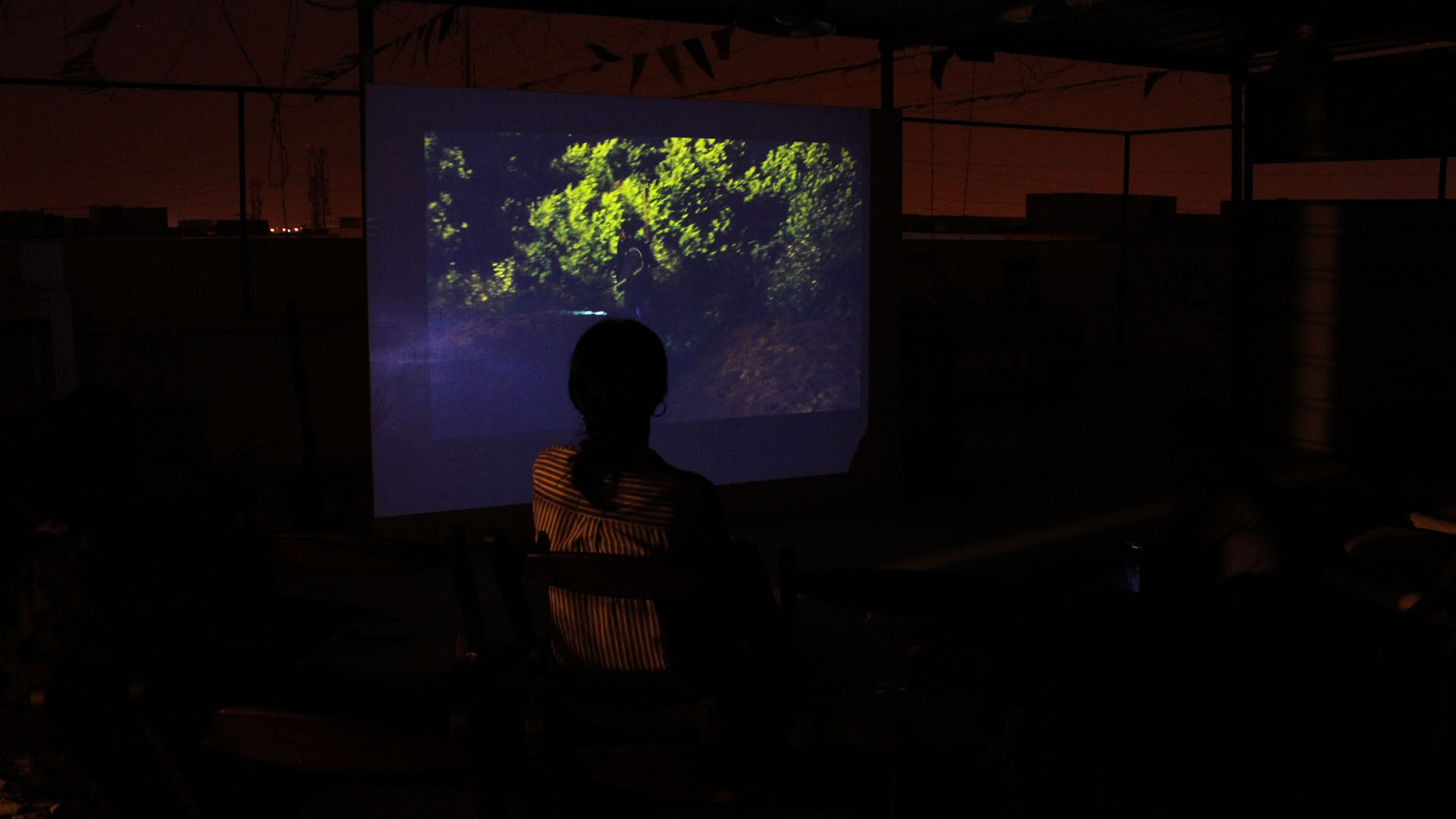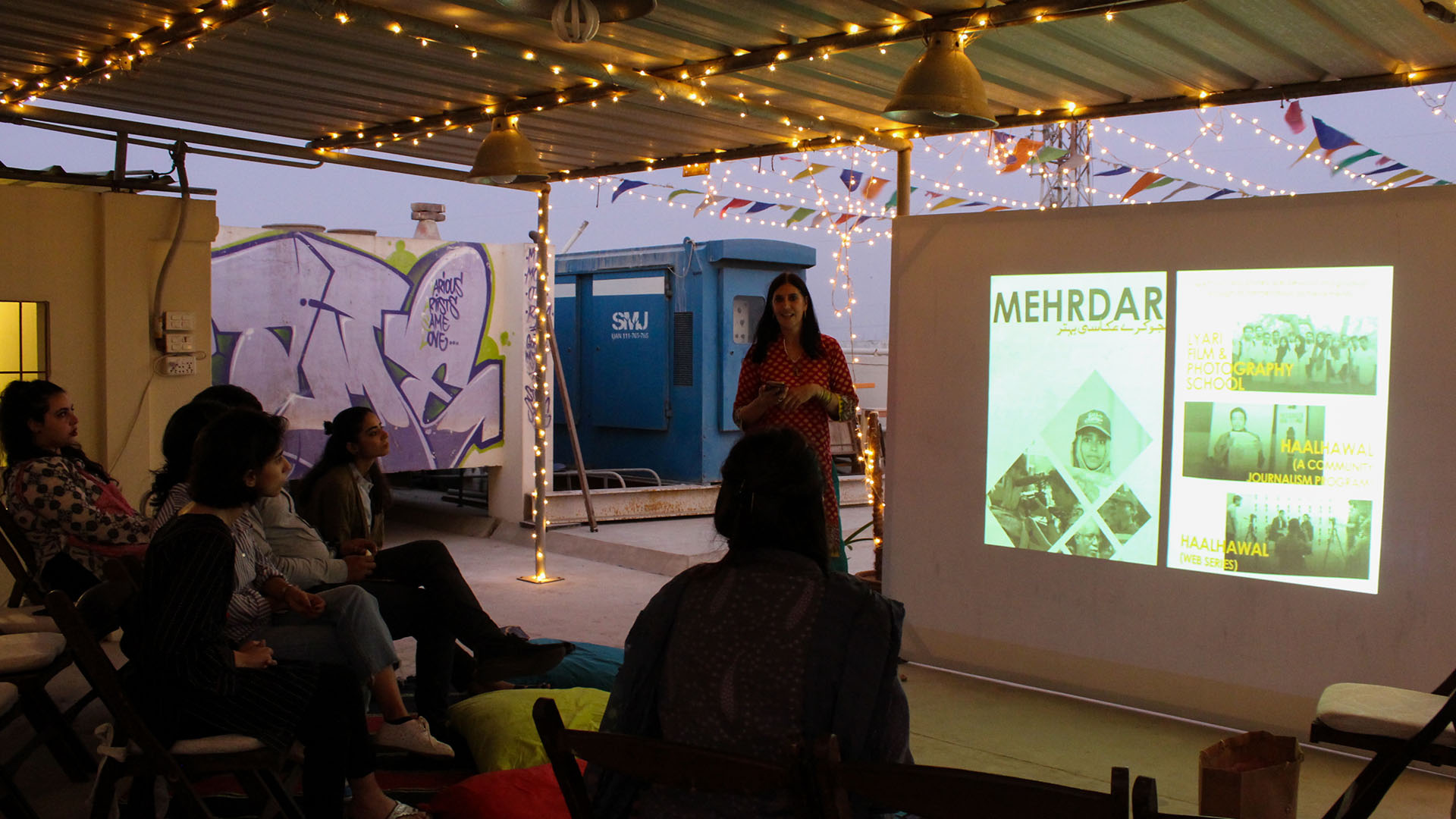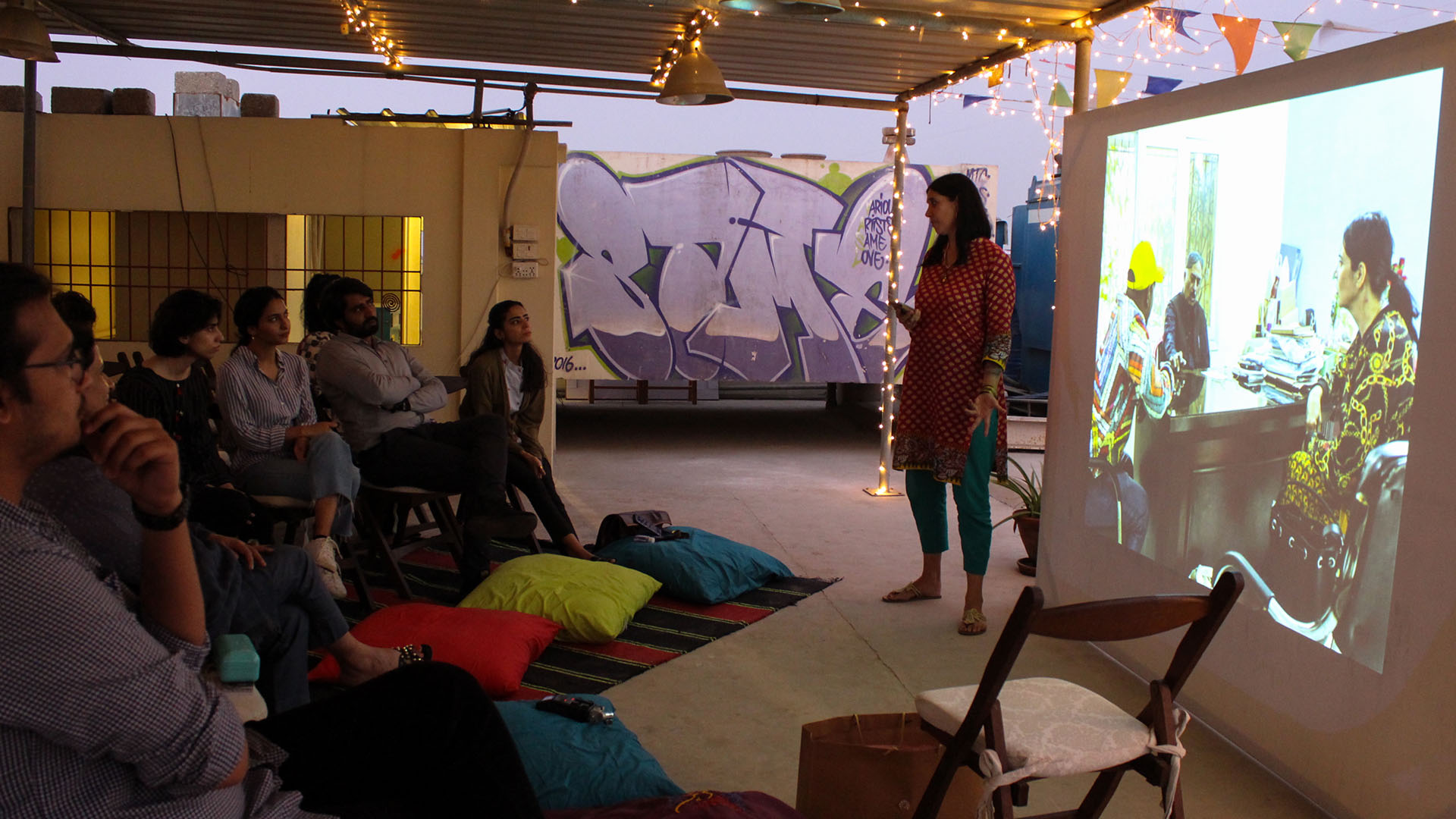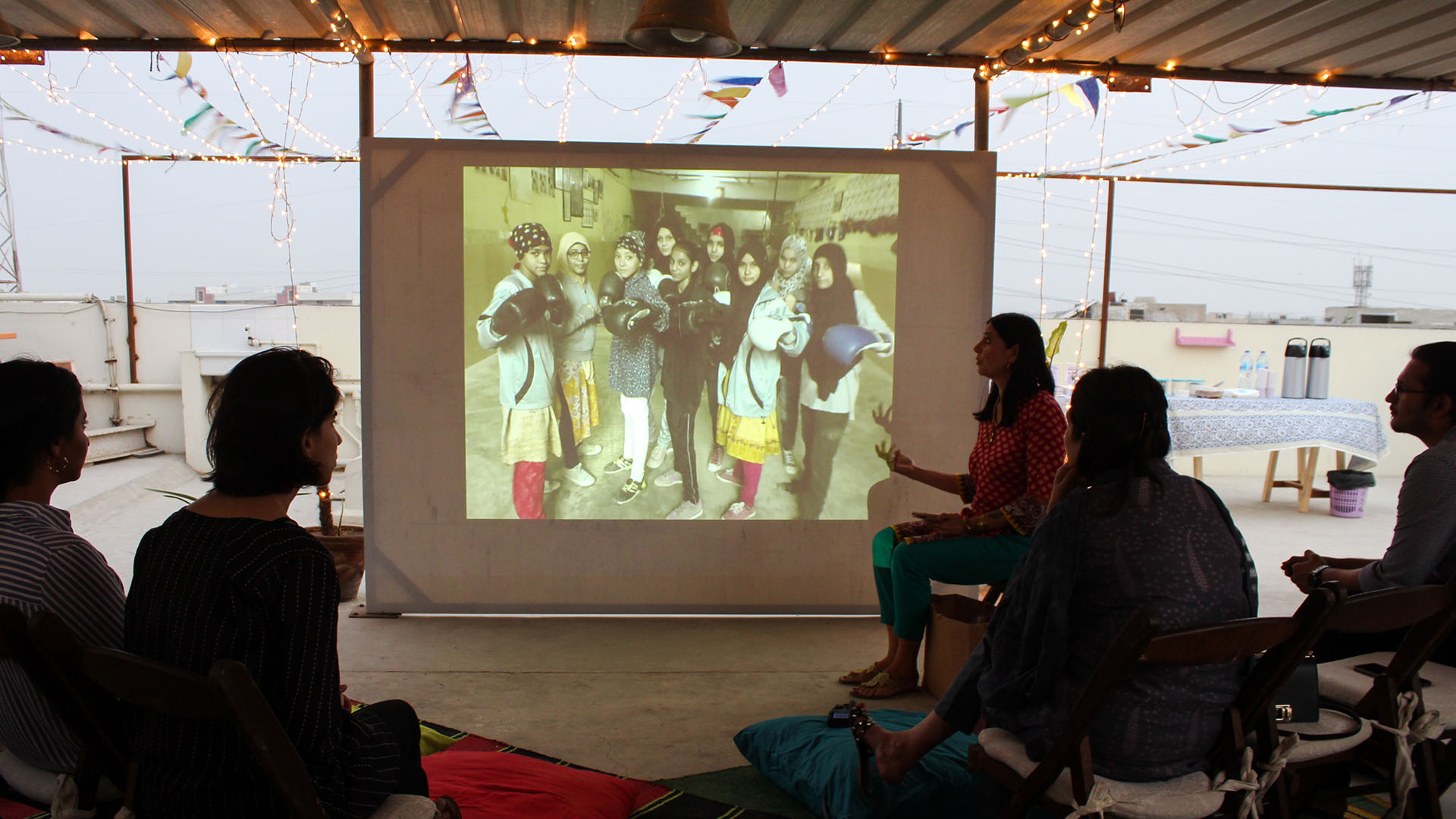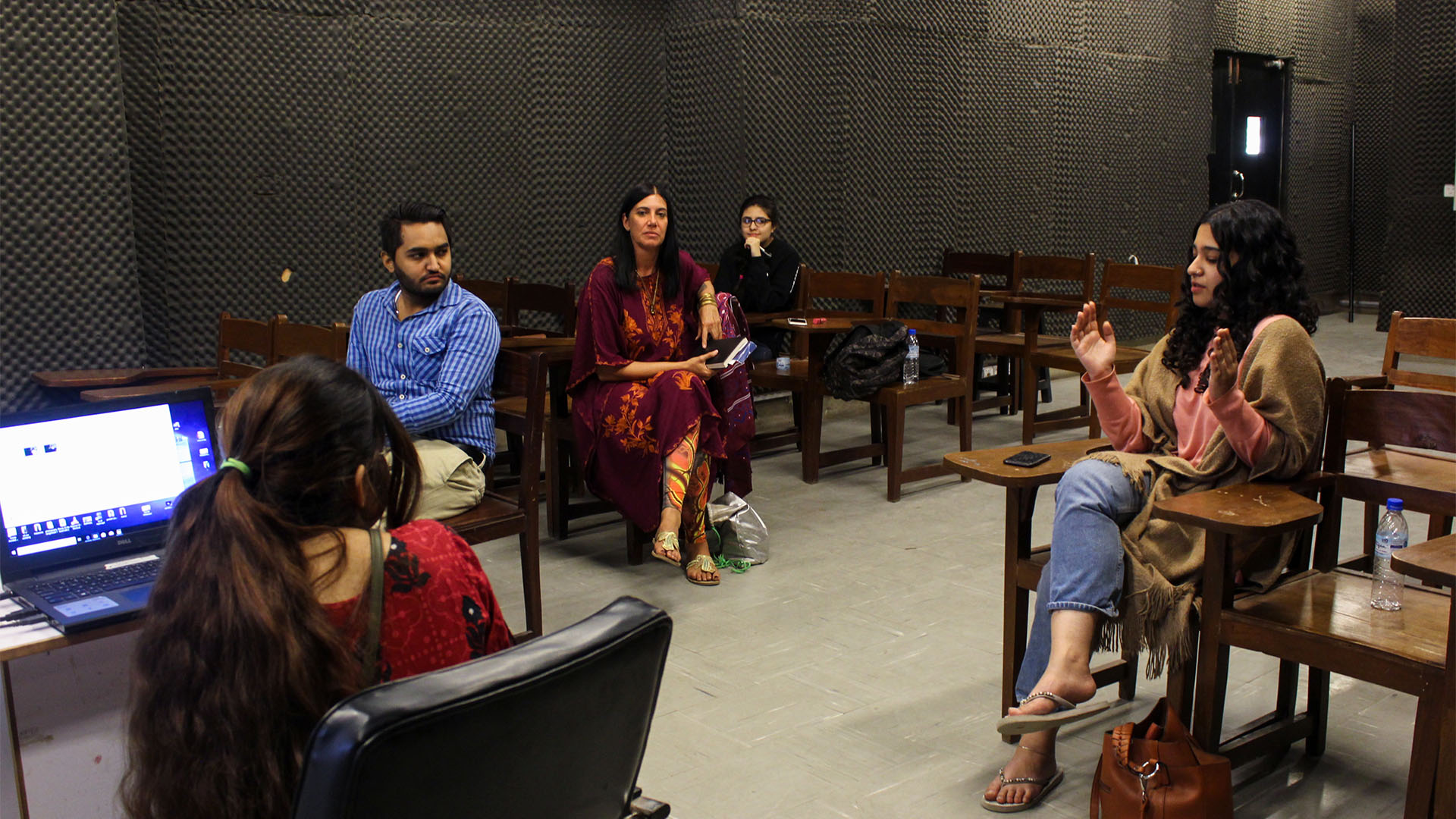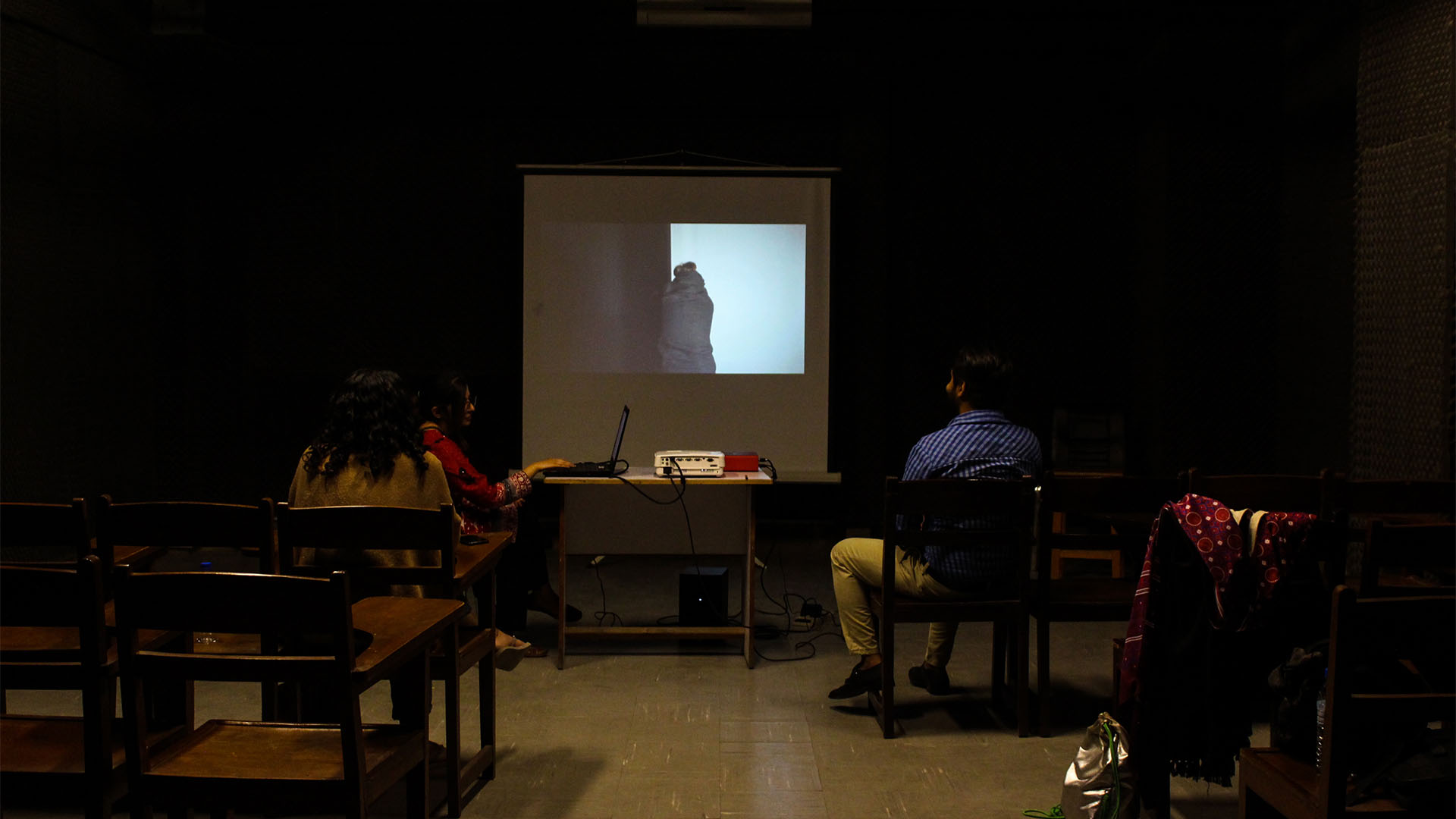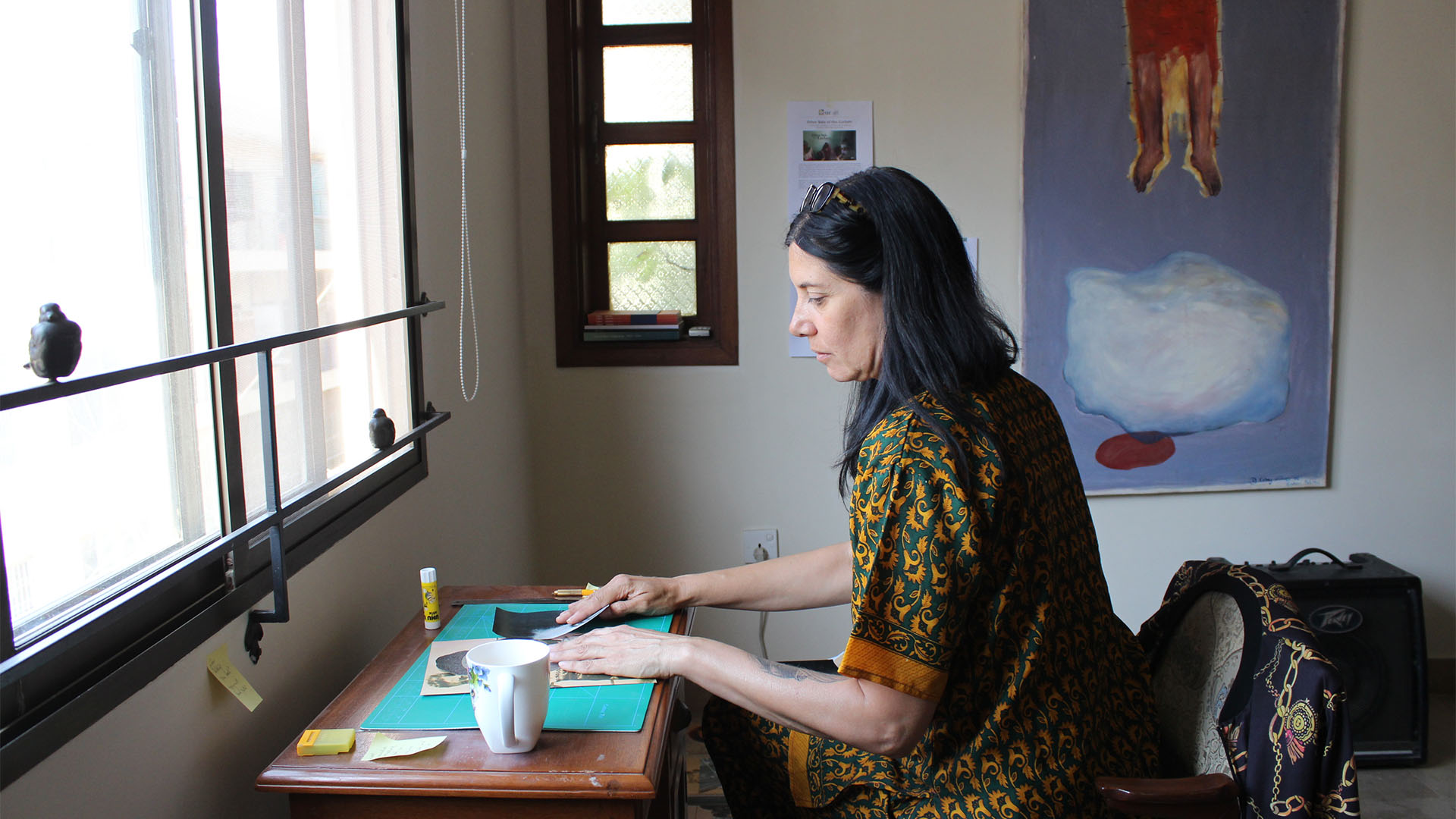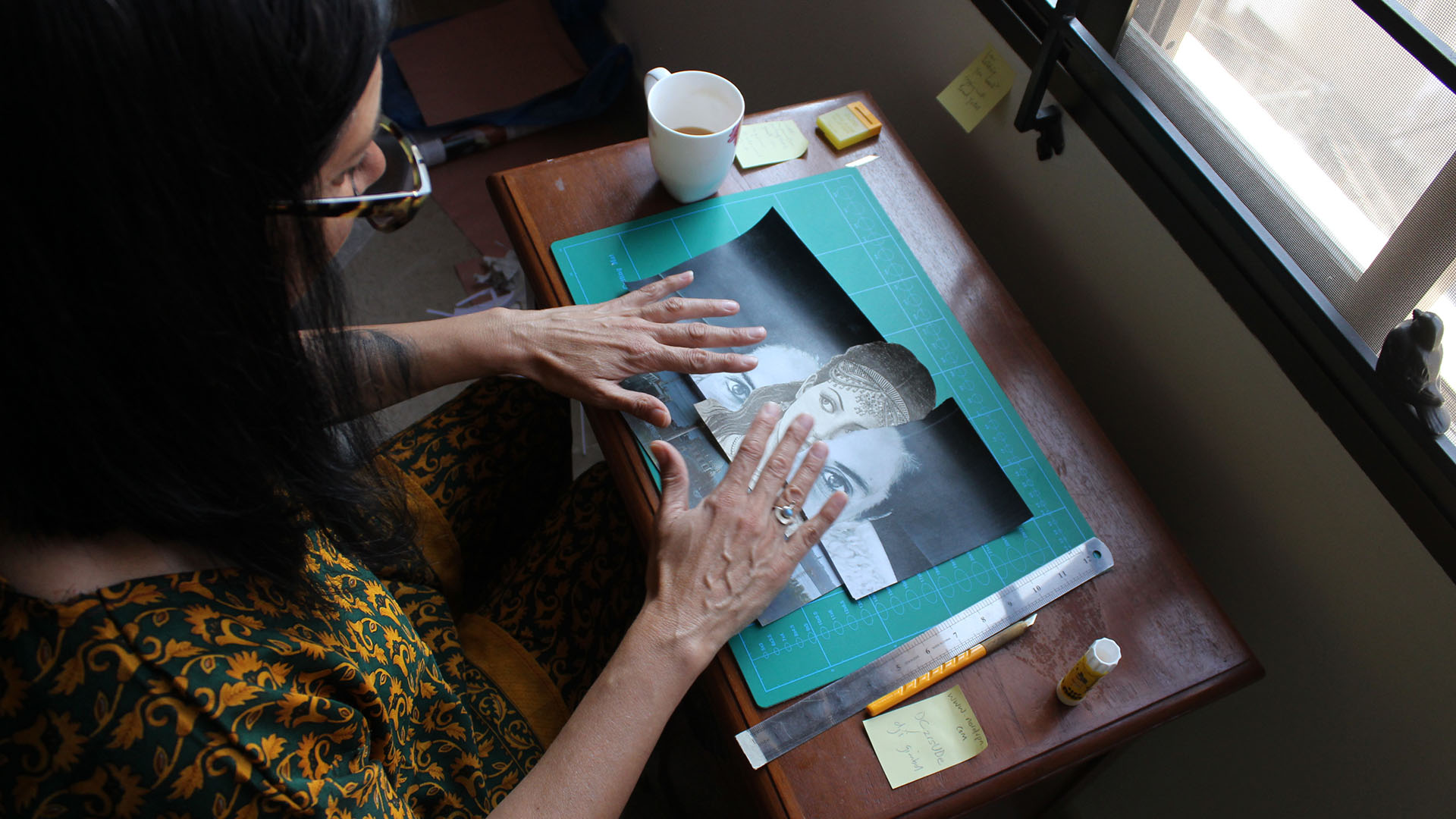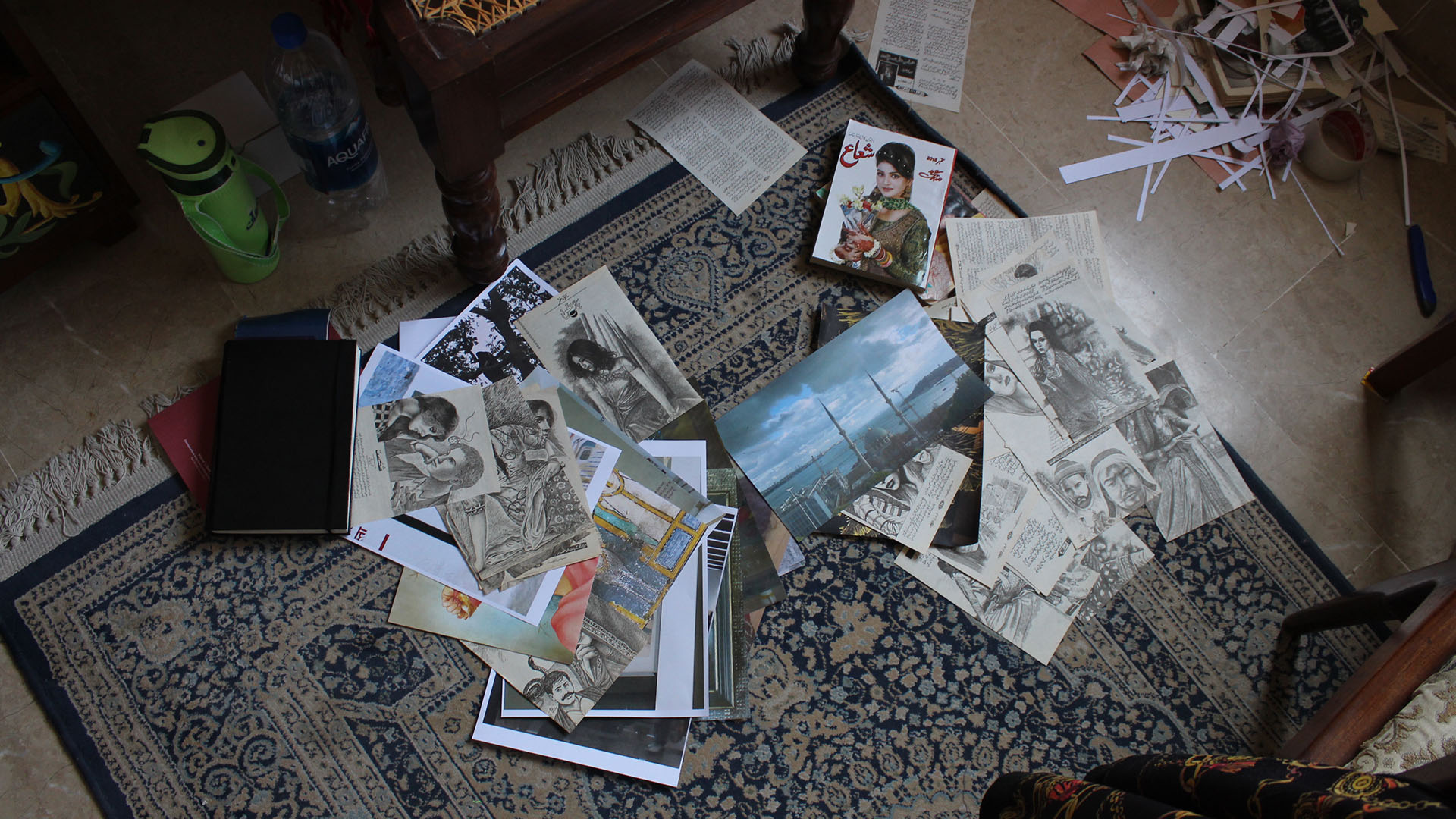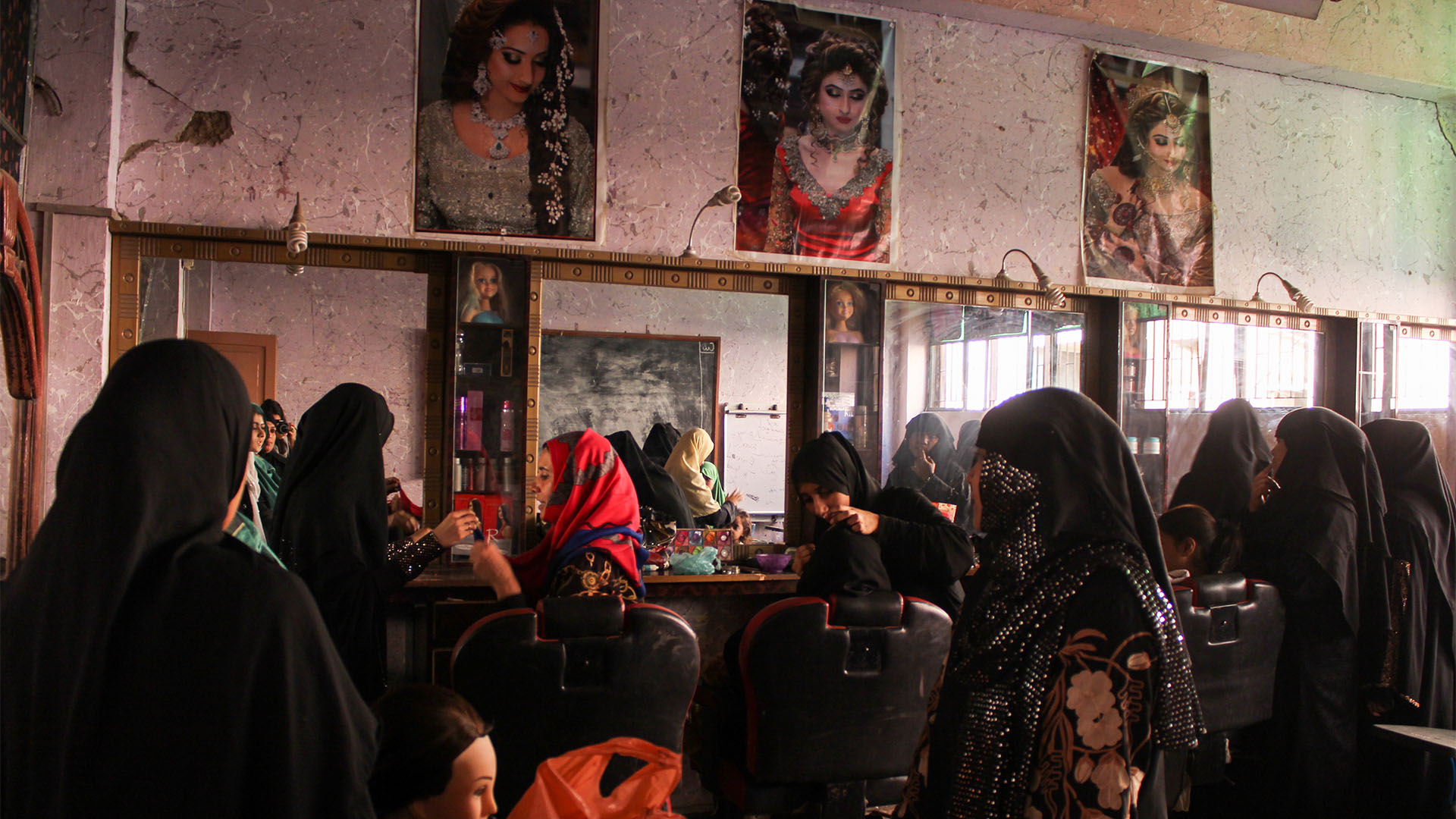She’s Grown into a New Skin. Her New Skin
Vasl Artists’ Association hosted Noorafshan for a duration of 7 weeks where she conducted New Media Art classes with 3rd year of Fine Art department at the Indus Valley School of Art and Architecture. Being a woman of mixed race with Eastern roots, Mirza was inspired by the local Pakistani community and began looking into various experiences she missed out on as she grew up in a western society. She was inspired by the ideology of female empowerment and girlhood in Pakistan began regular excursions to Lyari where she was inspired by the girls boxing team in Lyari, who train at the Lyari Boxing Club and the Pak Shaheen Boxing Club in Lyari, where she observed the girls during their training sessions. Inspired by her Indian grandmother, who used to ride a horse around her neighbourhood during her youth. Mirza had even joined embroidery classes and even took part in a brief hijab tying class.
Towards the end of the residency, Vasl conducted an artist talk for Noorafshan Mirza, where she spoke about her process and film and her duration in Karachi. After the talk Vasl also premiered her film ‘Ruptures’ for the first time in Karachi.
Noorafshan Mirza’s artistic practice is founded on collaboration and working collectively.
As an artist of biracial heritage. I have been on a long journey of decolonizing myself, my education, my body and my intimate relationships. These days I self identity as a white coded brown woman. In the words of Tamela J. Gordon “we can’t all be black feminists. It’s something you’re born into, it isn’t acquired. However we can all and should adopt a black feminist agenda. When black women win, mankind wins.” My alignment with this statement comes from an ongoing engagement with intersectional feminism. As a non black women of colour I grew up in a completely white rural society, exposed to second wave (white) British feminism only as an art student (London) in the early 90’s. Which I naturally felt didn’t speak to any of my lived experiences growing up, of being racialised and experiencing institutional structural racism. As a young person I was politicised both socially and musically, through the subcultures of punk and hip hop. To then ending up as an art student in white (art) school, where I was re-introduced to the practices of forced assimilation and “passing”. I did not have access to any black or brown women’s voices, in any part of my education. So now as a women in my sage/wisdom years I am returning to a place I was as an angry “rebellious teenager”, self educating myself and undoing the unconscious bias of white (supremacy) colonial power.
Myself and my long term collaborator the artist Brad Butler have currently finished our first fiction feature film Ruptures (2019), accompanied by an exhibition project The Scar (2018) on state enforced disappearance. Between 2008 and 2016 our art practice was framed as a fictional institution. This ‘Museum of non Participation” sought to confront (non) participation as a neoliberal condition and a threshold – between forms of resistance and forces of oppression. Prior to 2008 works by myself and Brad included structural films and expanded cinema including Non Places (1999), Where a straight line meets a curve (2003), and the Space Between (2005).
From 1998-2018 myself and Brad were co-directors of the artist film platform no.w.here through which we ran workshops, production of artists film & video and curated film screenings. Projects included The Free Cinema School and Implicated Theatre commissioned by the Serpentine Gallery, Center for Possible Studies, Experimenta Indian film festival in Mumbai, the Cinema of Prayoga at the Tate Modern, the no.w.here summer school. In 2018 no.w.here was handed to a younger generation who are running a Blk, PoC artists workers co-operative : not/nowhere.
Noor & Brad were nominated for the Jarman Award in 2012, The Artes Mundi Award 2015, and the Paul Hamlyn Award for visual artists 2015. Their works have been commissioned by Artangel, Hayward gallery, The Sydney Biennale, Film London, Film and Video Umbrella, the Serpentine gallery, and The Walker Art Centre.
